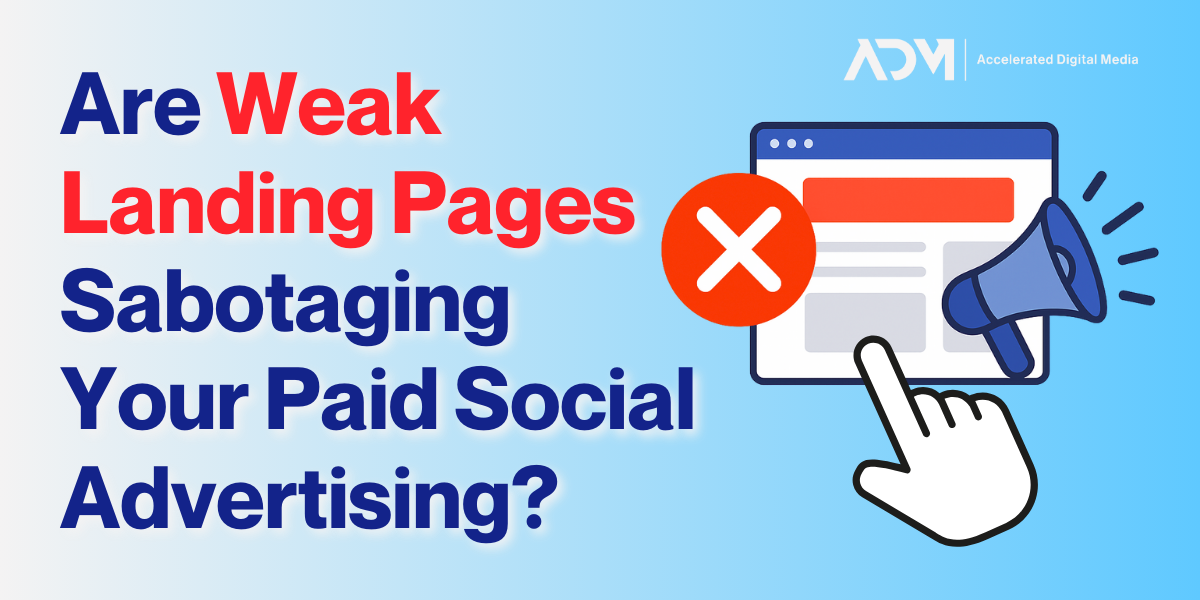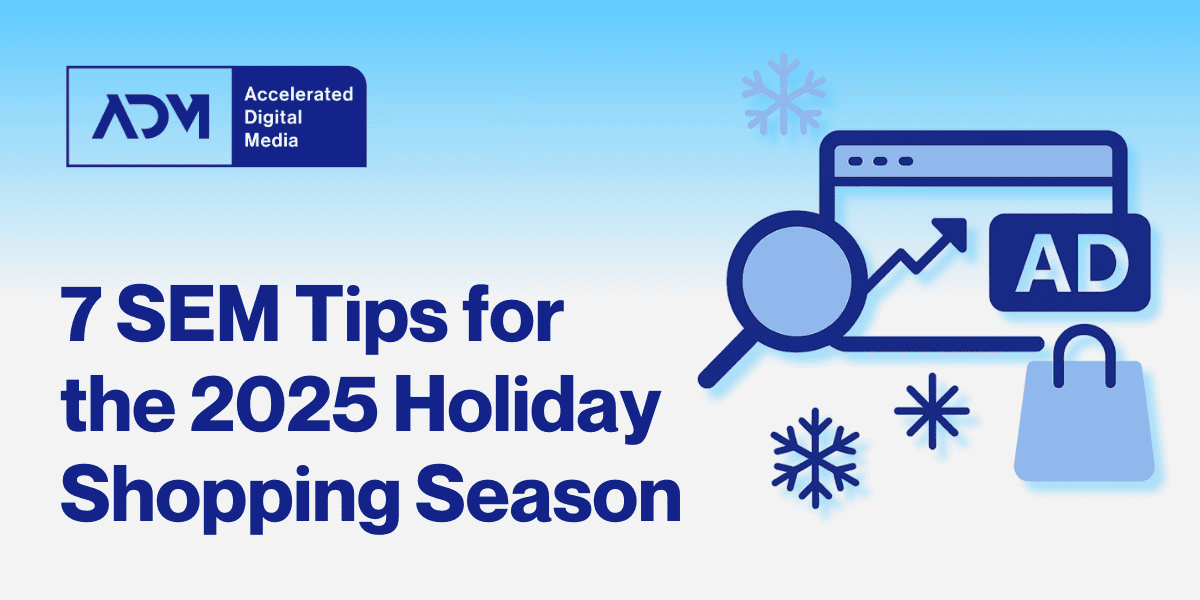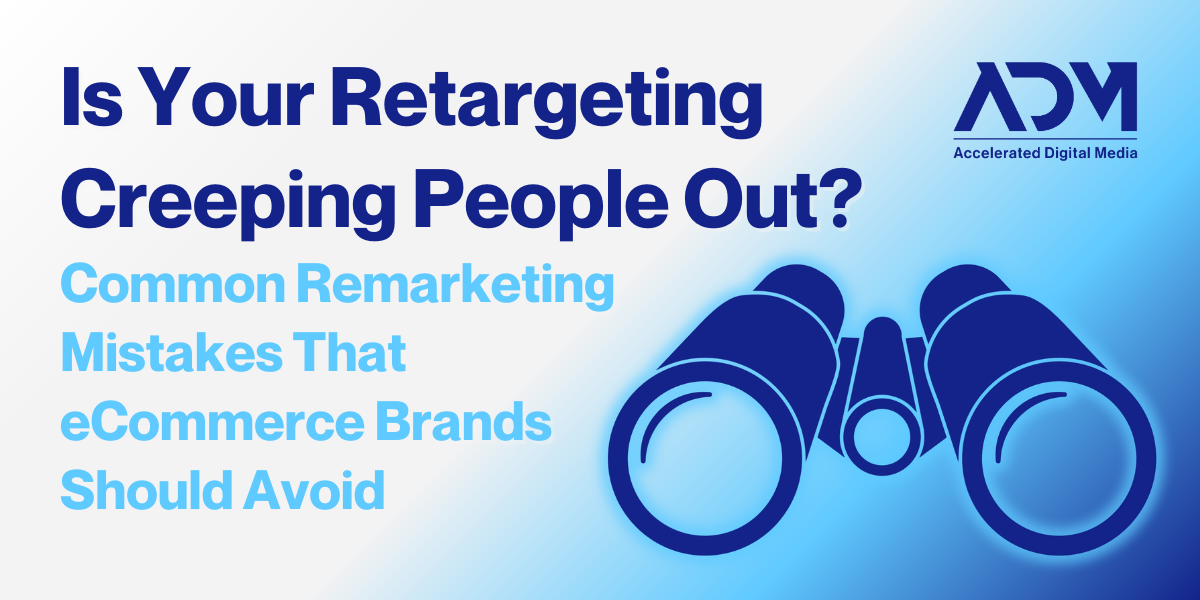In paid social advertising, getting a potential customer to your site is half the battle—or even less than that. Ultimately, you want them to convert, and the landing page that your social ads lead to will have the final say on that.
Poor landing pages don’t just decrease the odds of conversion. On-page performance can also send back negative signals to the paid social platform. If users frequently click but then quickly leave or don’t engage, the algorithms will interpret that as a sign of low relevance or poor user experience, which may decrease the visibility of your ads in the first place.
So in this blog, we’re going to explain how to set your landing pages up to work hand-in-hand with your paid social ads.
Characteristics of Great Paid Social Landing Pages
There’s no one way to build a great landing page–different brands will need to create experiences that reflect the particular goals they are pursuing. But in general, there are some common features shared by most high-performing social ad landing pages.
Social Proof and Legitimacy: It’s easy to be a skeptic of a brand you learn about on social media. Social media users look for social proof when they see an ad and decide to click on it. That’s why it’s often vital to center user reviews and testimonials on the landing page.
Likewise, landing pages for paid social ads also build trust by highlighting your business practices. Aspects like return policies, quality guarantees, free shipping, or other evergreen value propositions can build trust and overcome hesitation.
Directness: Social media is a playground for short attention spans, which don’t suddenly get longer once users are directed to a website. Your content should be easy-to-understand and direct to the point you’re trying to make—no one wants to go on a goose chase to figure out what your product actually does or why it’s better.
Ease of Navigation: All of that trust-building and value-explaining should position your landing page toward a singular action: a button to click, a form to fill out, a number to call. It’s incredibly important that the call to action or next step is clear for the viewer. If you create too many options to navigate away, or worse, have multiple different calls to action, you’re more likely to just distract users and have them wander off.
Aligning Landing Pages With Paid Social Ads
There is plenty to be said about making good landing pages—but before we get into that, let’s talk about aligning them with your ads. Pages and social ads need to work together to create a seamless, natural experience for users. That comes from:
Brand and Tone Continuity:
As you click from the social ad to land on the landing page, does it feel like the same brand from the user’s POV? Branding can mean colors and fonts, but it also means tone. For example, if your paid social ad is rooted in humor (as many good social ads are) and the landing page is serious (or even prescriptive), there will feel like a disconnect in brand messaging for the user as they travel from the ad to the landing page. If the very reason they clicked is absent where they land, you don’t have great odds of converting that user.
User-generated content (UGC), for instance, is still incredibly popular for paid social ads particularly because of the trust it builds. When paired with this type of creative, landing pages should reflect that organic feel and double down on efforts to build trust with users. Centering user reviews and testimonials early in the page or incorporating UGC-style imagery (as opposed to solely professional product photography).
Functionality:
The pages that you send users to must work, no matter what device they’re viewing them on. Social media is overwhelmingly accessed on mobile devices, so social ads are built to be viewed on them—but even to this day, many websites aren’t fully optimized for mobile performance. If your landing page doesn’t translate well to the small screen, your campaigns will suffer.
Critical elements to think about for designing effective mobile-first landing pages are text size and having the call to action above the fold. On the technical side, things like load speed can be a major factor in keeping users interested after clicking.
Tracking:
Ensuring the proper tracking is set up to follow a user from a paid social ad to the landing page is critical for understanding the results being driven from paid social ads. This is also vitally-important if you want to make sure that advertising algorithms are receiving the right signals from your landing pages so that they can optimize ad delivery effectively.
Strict quality assurance is critical for successfully identifying landing page performance. It is easy to miss pixels/tagging when running multiple landing page tests, and QAs are the best way to ensure this becomes impossible to miss rather than easy to miss.
Why It’s Best Not to Use Redirect Links in Your Ads
As mentioned, load times are something to pay attention to with your paid social destinations, and using redirects can slow the journey down significantly—so for that alone, it is safest to avoid them. It also complicates tracking, reducing the platform’s ability to receive feedback from your site.
Also, many digital marketing campaign algorithms also use your landing pages to determine ad relevance when optimizing for potential customers, so if the algorithms can’t easily find their way to your site you might be losing out.
Should Social Ads Go Directly to PDPs or More General Landing Pages?
For eCommerce brands, there’s often confusion as to whether it’s better to send users directly to a specific product description page (PDP) as opposed to a product collection or a more general brand page. Here are the primary considerations:
Product inventory: The biggest reason not to use a PDP is stock. If there is a real likelihood that a product you’re pushing will go out of stock—particularly during sales events—then there is a strong case for using a collection page instead of a PDP. You don’t want to spend money getting users to click on a product they can’t actually buy—that’s no good for either your social budget or brand perception
Creative and Messaging: Creative and messaging are the most common dictators of whether an ad sends traffic to a PDP or a collection page. If the creative is solely focused on one product (maybe one that comes in multiple colors or patterns), then it would be illogical to send traffic from that ad anywhere but the PDP. On the other side, if an ad is focused on a new seasonal drop or features many products, the traffic from that ad should go to a collection page that showcases multiple products that were featured in the ad creative the user was just exposed to.
Audience: It’s also important to consider your audience when deciding between a product page vs a collection or more general page. If your audience is higher in the funnel and still very much so in a discovery phase with the brand, then giving them more variety or diversity on the landing page through a collection page is often the best option. If you’re targeting an audience of past purchasers with the intent to make them aware of a new color or pattern of a product they have purchased in the past, a direct path to purchase through a PDP will yield the most efficient results.
How to Tell if Your Landing Pages Are Hurting Your Ads
The biggest tell that your landing pages may be contributing to poor performance? Conversion rates. If the ad click-through rate is high, the creative itself is driving traffic—but if they’re not converting once they reach the site, then it’s likely your landing page is either not aligned with the creative or not set up for success.
In the case of a poor conversion rate, your investigation might look like:
- Re-evaluating your message and consistency: If people are clicking but not converting, there’s a chance that your ads are creating expectations that your landing page isn’t meeting. Does the landing page match the experience the paid social ad promised? Are there large gaps in consistency that need to be overcome?
- Testing your landing page load speed: It’s hard enough to capture user attention in a crowded social feed, and once you have it you need to hold it by keeping the progression moving. That means slow landing page load times are a common culprit for poor performance. There are numerous tools that will analyze your load speed and suggest remediations and improvements—like Google’s PageSpeed Insights tool.
- Checking your mobile optimization: As described earlier, most social media traffic takes place on mobile devices…but when’s the last time you poked around on your own brand site on mobile? Most website and ad design happens on laptops, which can create a disconnect. Pages that look perfectly logical and flow well on a computer screen can sometimes become confusing on a handheld. Make sure the intent you’re trying to drive users towards holds up no matter the screen they view it on.
Making your landing pages work with your paid social ads can be a complicated pursuit, and it often requires rounds of iteration and testing before you strike the perfect combination. If this is an issue you’ve been struggling with, some expert assistance may be in order—don’t hesitate to reach out to the team here at ADM for an audit of your social media and landing page strategies. Contact us below:




